Art World
The New Ocean Space Center in Venice Puts Art and Science at the Center of a Growing Concern: Rising Sea Levels
The inaugural exhibition is a solo show by Joan Jonas, who worked with researchers to prepare new work.
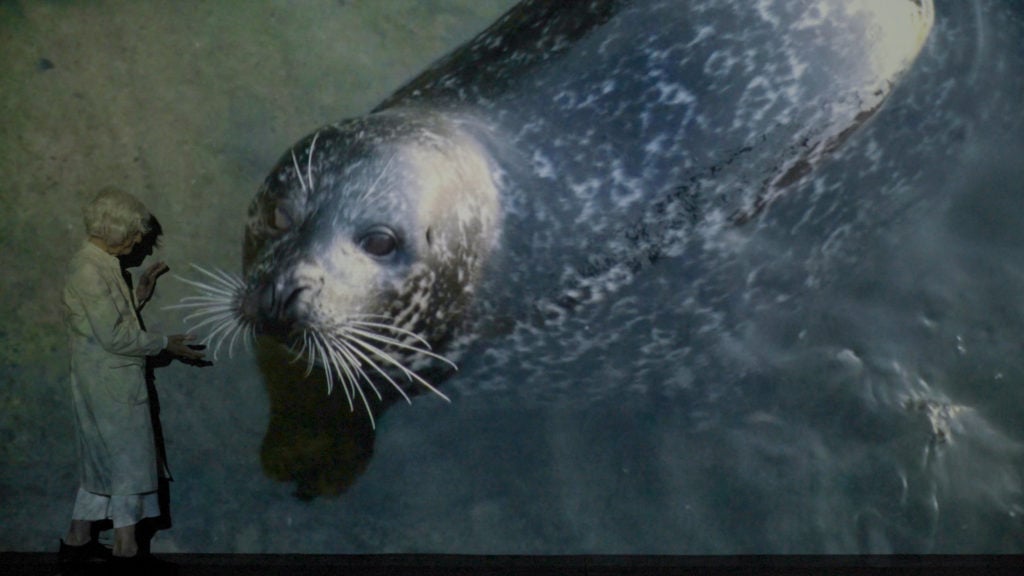
The inaugural exhibition is a solo show by Joan Jonas, who worked with researchers to prepare new work.

Hili Perlson

According to Venetian lore, the Church of San Lorenzo is the final resting ground of the great explorer Marco Polo, whose family lived nearby. But excavations carried out in the 20th century yielded no discoveries of human remains and left only a monstrous cavity in the deconsecrated edifice’s marble floor. Except for a few special occasions, the church has been closed to the public for more than a century.
That changed this past Saturday, March 23. After a two-year historic preservation, the building reopened as Ocean Space, an arts center dedicated to scientific, academic, and artistic engagement with the high seas. Its first show is dedicated to American artist Joan Jonas.
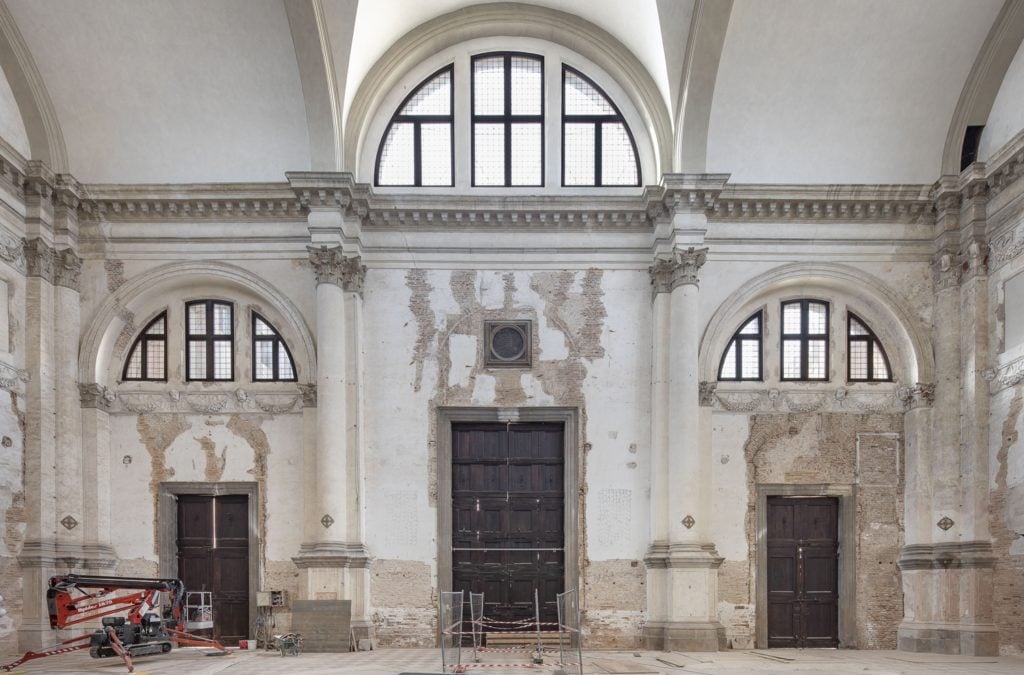
Ocean Space undergoing renovation. © Church of San Lorenzo, Venice. Photo: TBA21–Academy.
Ocean Space is an initiative by Francesca Thyssen-Bornemisza (formerly von Habsburg) and the TBA21-Academy, which she founded in 2011. The collector and philanthropist became aware of the decaying church in 2012, when it temporarily opened as the Mexican Pavilion at the Venice Architecture Biennale.
Thyssen-Bornemisza has worked closely with the local commune ever since to reach a long-term lease agreement, which she finally secured in 2016, not long after she announced the closure of her private museum, TBA21, in Vienna. This isn’t the first religious building she has refurbished: in 2018, Thyssen-Bornemisza opened the restored Monetary of Our Lady of the Cave on the Island of Lopud, off the coast of Dubrovnik.
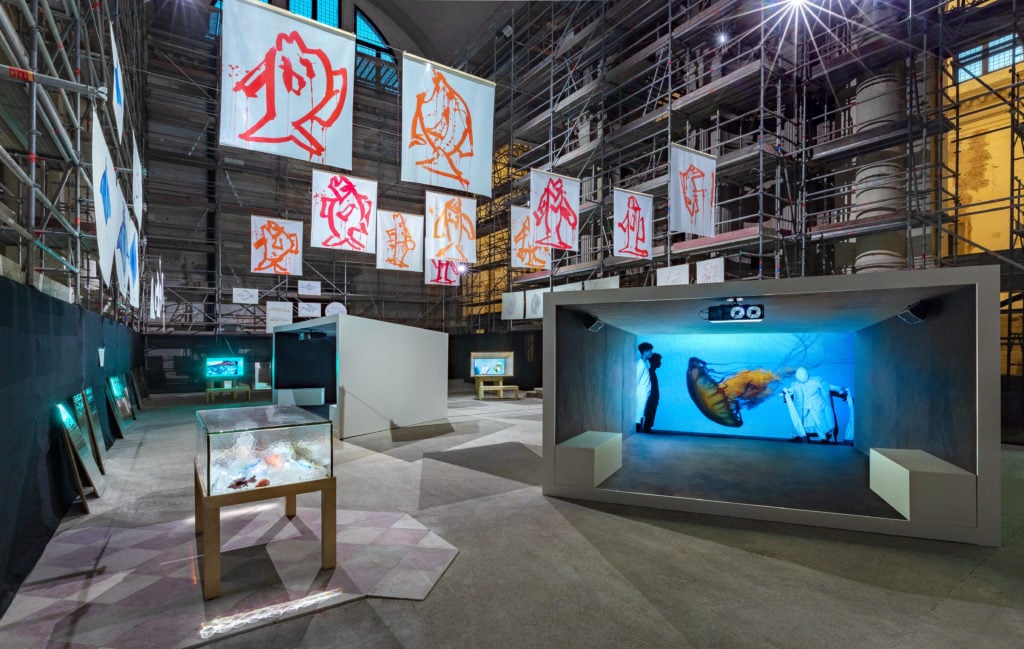
Joan Jonas’s exhibition “Moving Off the Land II” at Ocean Space, Chiesa di San Lorenzo. Photo: Enrico Fiorese.
To prepare for the inaugural exhibition at Ocean Space, “Moving Off the Land II,” Jonas visited aquariums around the world, collaborated with marine biologists, and conducted interviews with Jamaican fishermen (TBA21-Academy works closely a fish sanctuary in the Caribbean country). The experience has taught her a lot: that fish like to be petted, for example, and that an octopus knows when it is in captivity, and will sometimes try—often successfully—to escape.
The first work viewers encounter when entering the space is a large painting tracing the outline of a sperm whale in blue and white hanging high over a scaffolding inside the church’s 5,400-square-foot nave. (The show is mounted in part on that scaffolding “to express fragility,” Joan Jonas explained.) Sounds of the whale’s complex click-and-clang language fill the massive space, and behind the alter, in the nave where the rest of the works are installed, there’s a hand-drawn sign with a quote by marine biologist David Gruber, who’s been working with TBA21-Academy on various expeditions, explaining that the animal’s global population has declined from 1.3 million around the time that Herman Melville wrote Moby Dick to 300,000 today. The sign also reminds viewers that this predator once walked the land before it went to the sea.
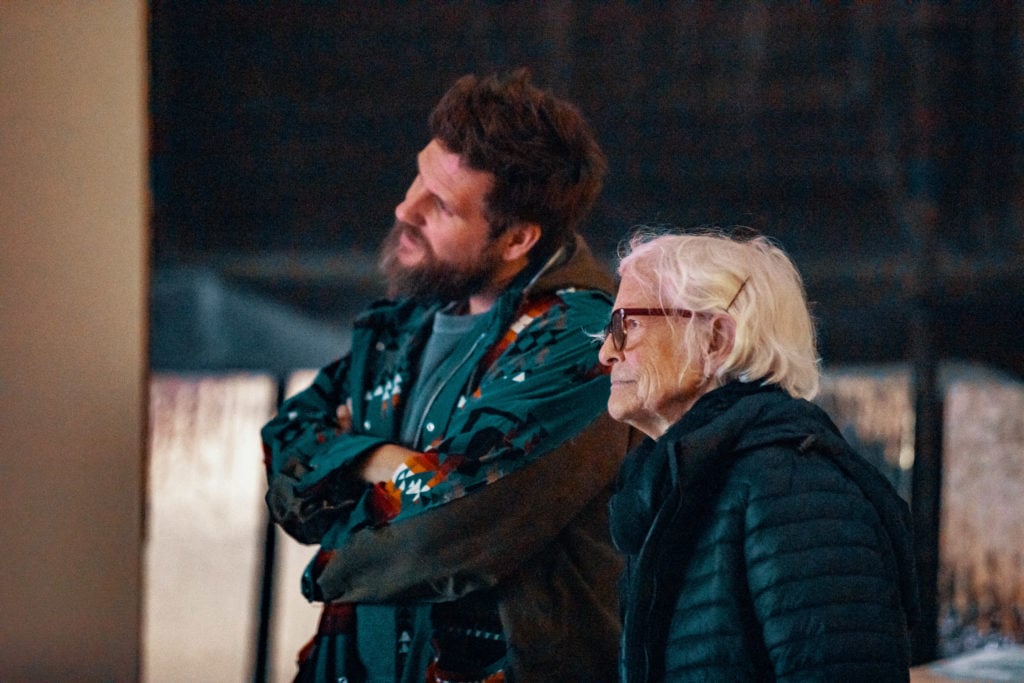
Markus Reymann with Joan Jonas during installation, Ocean Space, Chiesa di San Lorenzo, 2019. Photo: Enrico Fiorese.
This is a key element in Jonas’s exhibition: according to the artist, there are inherent memories of our common ancestors embedded in our bodies and brains. Other quotes in the space include passages from Shakespeare’s The Tempest, and there are references in one of the video installations to T. S. Eliot’s treatment of the mythical mermaid. (On May 7, during the opening week of the Venice Biennale, Jonas will do a performance on “the role the oceans have played for cultures throughout history as a totemic, spiritual, and ecological touchstone,” according to a press release.)
For the artist, the exhibition is something of a return. It revisits many of the elements of her US pavilion show at the 2015 Venice Biennale. Large ripple-surfaced mirrors, similar to the ones that were in the pavilion’s rotunda, lean against the scaffolding at Ocean Space. What’s more, the children she worked with to make her US pavilion videos reappear in new works, made four years later.
Markus Reymann, the director and co-founder of TBA21-Academy, was visibly moved when he mentioned during Ocean Space’s opening that the show coincided with climate change protests around the world, in which thousands of children took to the streets in major cities to demand action for their futures.
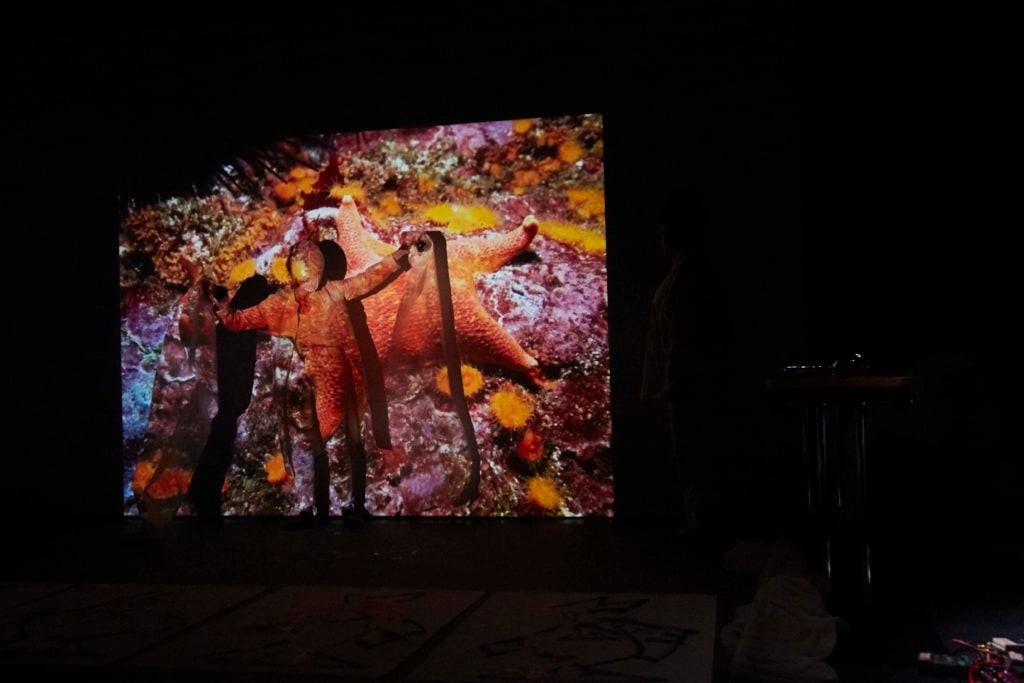
Joan Jonas, Moving Off the Land (2016/7). Courtesy the artist and Gavin Brown’s Enterprise, NY/Rome. Photo: Elisabet Daviosdottir.
Elsewhere in the exhibition, a video presents footage that Gruber shared with Jonas, shot underwater with special equipment that he developed to capture deep-sea life’s bio-fluorescence. “You can’t care about what you don’t know,” said the marine biologist Sylvia Earle, a pioneer in the field, who held a conversation with Jonas during the festive public opening moderated by the show’s curator, Stefanie Hessler.
Through art, she said, we can reach wider audiences with topics such as rising sea levels, extinction, and the disappearance of deep-sea life. “The sperm whale population was a lot smaller during my childhood,” she noted, stressing that it is up to us to decide whether this giant mammal would become extinct. Through protection legislation and international agreements on the protection of the oceans, the whale’s population has grown. We can still effect positive change.
“Moving Off the Land II” is on view at Ocean Space, Campo San Lorenzo, 30100 Venice, through September 29, 2019.